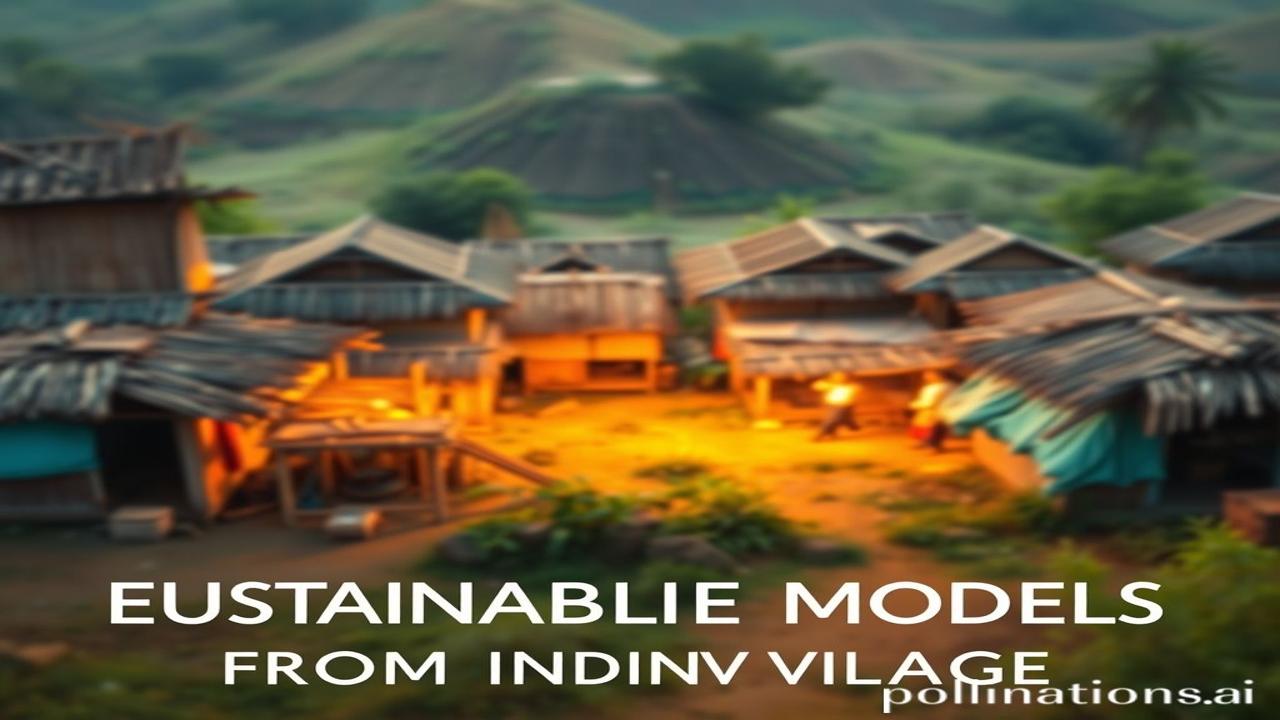Mitti ki Khushboo, Aarthik Sachhai: Sustainable Economic Models from Indian Villages
Kabhi socha hai, jab shaam dhalti hai aur gaon mein diye jalte hain, tab us roshni mein sirf bhakti hi nahi, balki ek poori aarthik vyavastha bhi chamakti hai? Waqt ki dhool mein chhupi, yeh vyavastha, aaj bhi hamare liye ek seekh hai. Think about the scent of the earth after the first rain, the vibrant colours of handwoven fabrics, and the resilience of communities thriving on local resources. Let’s unearth the sustainable economic models that have sustained Indian villages for centuries.
Bharat ki Aarthik Virasat: A Glimpse into the Past
What exactly are we talking about when we say “sustainable economic models” from Indian villages? Well, it’s not just about farming. It’s a complex web of interconnected systems – agriculture, craftsmanship, trade, social cooperation, and ecological balance – all working in harmony.
This concept isn’t new. Go back to the Mauryan Empire (around 322-185 BCE) and you’ll see well-organized village economies thriving. The Chola dynasty in South India (9th-13th centuries CE) built sophisticated irrigation systems, ensuring stable agricultural production. These systems weren’t just about economics; they were deeply intertwined with social structures, ethical values, and environmental consciousness. Panchayat systems, essentially self-governing village councils, played a crucial role in managing resources and resolving disputes. Imagine a time when decisions were made collectively, prioritizing the well-being of the entire community.
Why is this history important? Because it showcases a model where economic growth was tied to social equity and environmental sustainability. It proves that prosperity doesn’t have to come at the cost of our planet or our communities.
Gaon ka Jeevan: People, Practices, and Perseverance
Let’s picture a typical day in an ancient Indian village.
“Ma Yashoda, aaj market mein kya bikega?” asks her neighbour, Radha. Yashoda replies, “Aaj meri banai hui mitti ki diya, aur thode ghee. Aur tum?” Radha smiles, “Main aaj apne bageeche ke taaze phal le jaungi. Mandir ke liye phool bhi.”
The rhythm of life revolved around agriculture. Farmers cultivated crops using traditional methods, relying on natural fertilizers and water management techniques. Artisans crafted beautiful objects – pottery, textiles, metalwork – using locally sourced materials. Trade within the village, and with neighbouring settlements, ensured a flow of goods and services. The local temple wasn’t just a place of worship; it was also a community centre, a bank, and a space for social gatherings.
The land was not just property, but a sacred entity – धरती माँ – to be revered and protected. This respect for nature was ingrained in every aspect of life, from agriculture to architecture. Water was conserved meticulously; waste was recycled; and resources were used mindfully. The concept of अतिथि देवो भव – treating guests as gods – extended to strangers, fostering a spirit of generosity and cooperation.
Dhrohar aur Pehchaan: Echoes of the Past in Present India
Do we see echoes of these sustainable economic models in today’s India? Absolutely! While modernization has undoubtedly transformed the landscape, the spirit of these practices persists in many rural communities.
Think about:
- Khadi and Handloom: Supporting local artisans and promoting sustainable textile production. Khadi, a symbol of self-reliance championed by Mahatma Gandhi, remains a powerful reminder of the potential of village-based industries.
- Community-Based Natural Resource Management: Many villages are actively involved in protecting their forests, water bodies, and biodiversity through traditional knowledge and collective action.
- Organic Farming: A growing movement towards sustainable agriculture, drawing inspiration from ancient practices and promoting ecological balance.
- Panchayati Raj Institutions: Local self-governance structures that aim to empower villages and promote participatory development.
These are not just nostalgic throwbacks; they are viable alternatives to unsustainable, consumerist models. They offer a path towards a more equitable and environmentally responsible future – a future rooted in Bharatiyata and informed by our rich heritage.
Mazedar Tathya ya Bhram-Bhanjak: Facts and Fiction
Log samajhte hain ki “development” ka matlab hai gaon ko shehar bana dena… lekin asli sach yeh hai… that genuine development means empowering villages to thrive on their own terms, using their unique resources and knowledge. We often associate “progress” with large-scale industrialization and urbanization. But is that the only path? Our history shows us that sustainable prosperity can be built from the ground up, starting with strong, self-reliant village economies. In many cases, what we see as “backward” is actually a sophisticated system of resource management and social cohesion that has sustained communities for generations.
Drishya aur Bhavnaayein: A Sensory Journey
Imagine walking through a village market. The air smells of fresh spices, earthy pottery, and blooming jasmine. The sounds of laughter, bargaining, and the rhythmic beat of drums fill your ears. The sun warms your skin as you admire the vibrant colors of handwoven saris. The taste of freshly squeezed sugarcane juice lingers on your tongue. This is the sensory richness of village life, a life deeply connected to nature and community. The temple walls, cool to the touch, whisper stories of devotion and resilience. The scent of incense mingles with the aroma of home-cooked meals, creating an atmosphere of warmth and belonging.
Antim Vichar ya Uddharan: A Closing Reflection
As we navigate the complexities of the modern world, let us not forget the wisdom of our ancestors. Let us strive to build a future where economic growth is balanced with social justice and environmental responsibility.
“सर्वे भवन्तु सुखिनः, सर्वे सन्तु निरामयाः, सर्वे भद्राणि पश्यन्तु, मा कश्चिद् दुःख भाग्भवेत्” – May all be happy, may all be healthy, may all see good, may no one experience sorrow. This ancient shloka encapsulates the essence of sustainable living – a vision of collective well-being, harmony, and respect for all life. Let’s learn from our villages and build a future worthy of our heritage.
